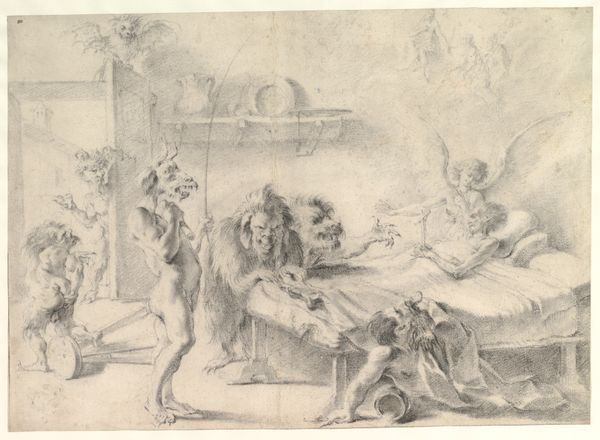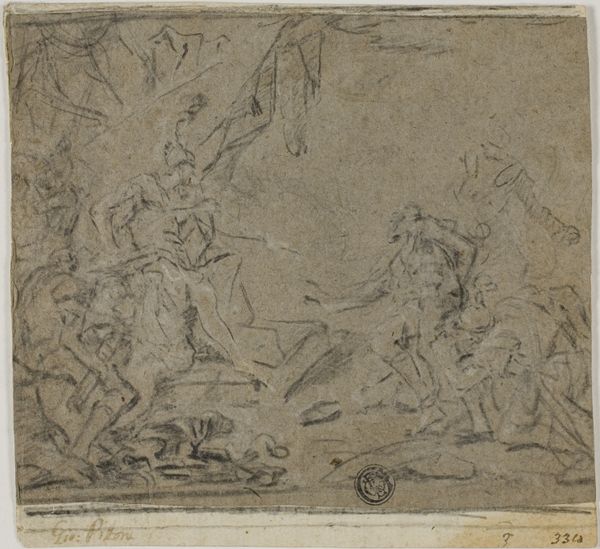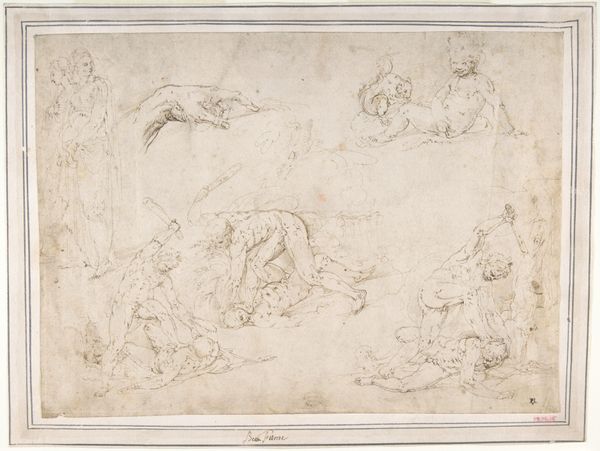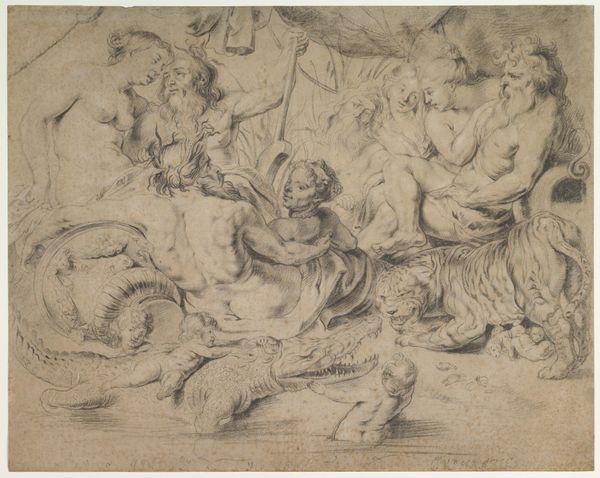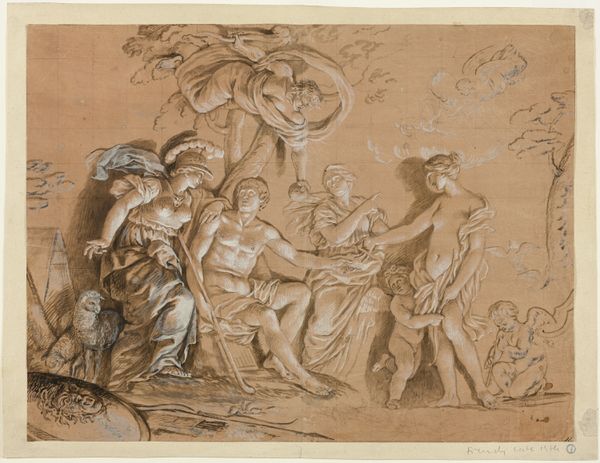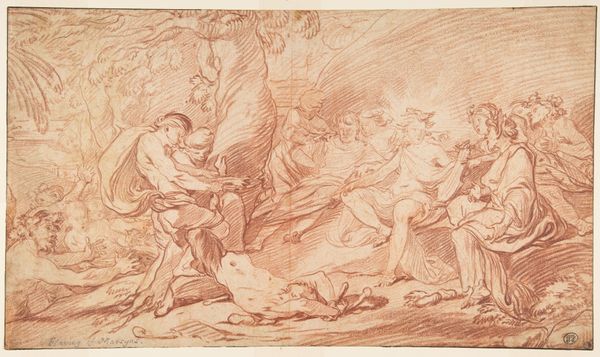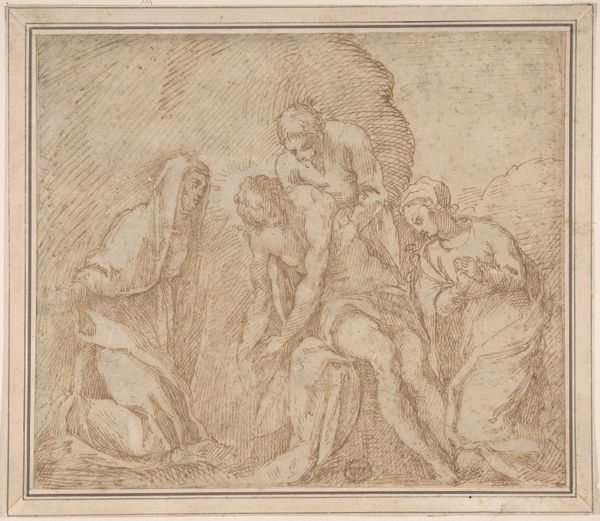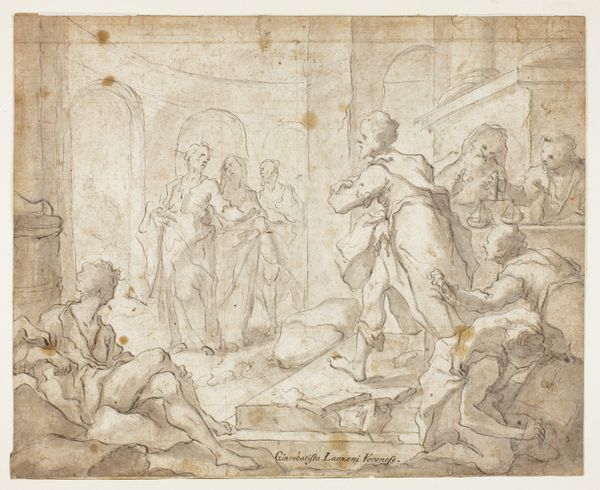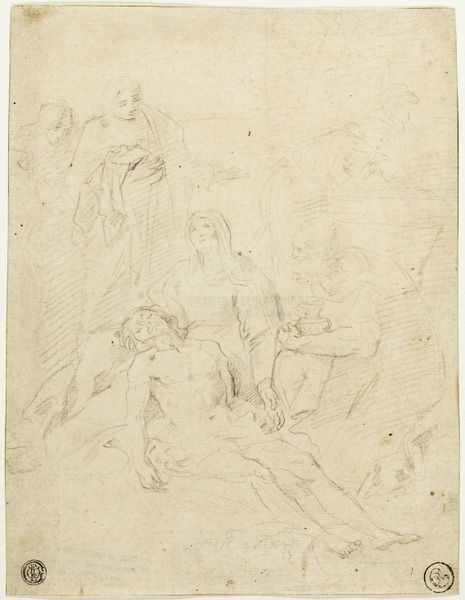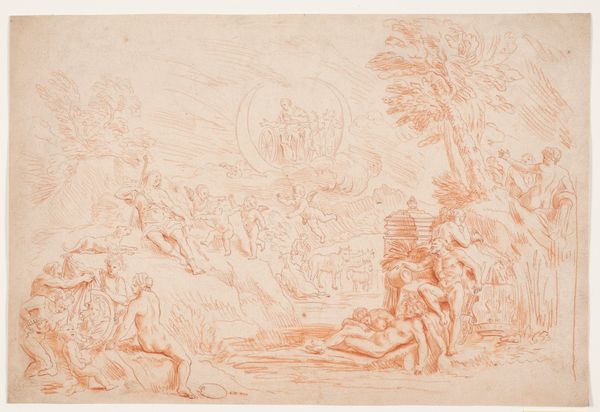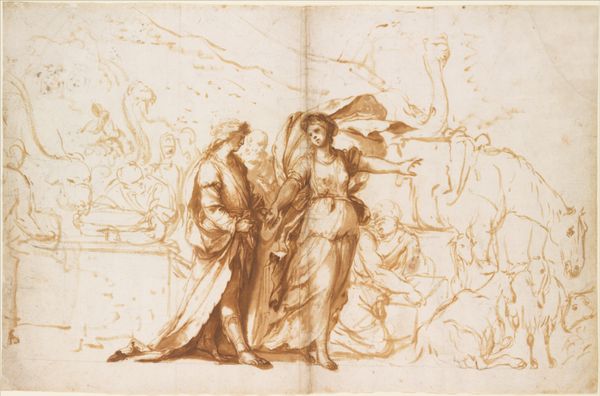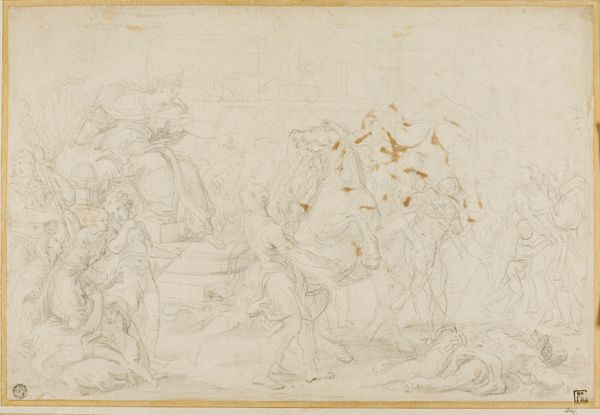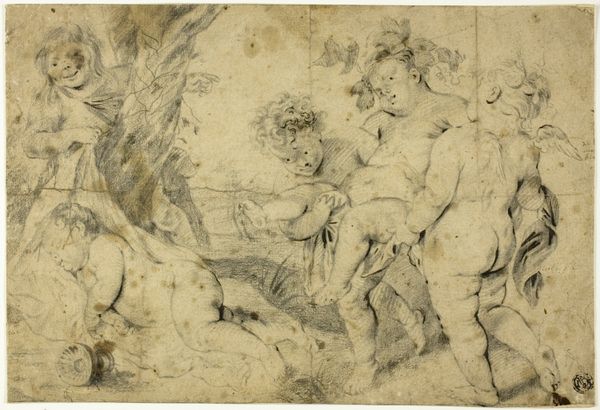
drawing, print, ink, pen, charcoal
#
portrait
#
drawing
#
narrative-art
# print
#
charcoal drawing
#
figuration
#
charcoal art
#
ink
#
pen
#
charcoal
#
history-painting
#
academic-art
Dimensions: 185 × 253 mm
Copyright: Public Domain
Editor: So, this is "Adoration of the Shepherds" by Nicolas Poussin. It looks like a charcoal drawing, maybe with some ink. The figures have such intense expressions; I find the drawing very dynamic despite the somber theme. What do you make of this work? Curator: The symbols woven within this scene reflect a complex understanding of divinity and humility. The shepherds themselves, traditionally figures of rural simplicity, are presented with an almost academic grace. Do you see how Poussin uses their postures of reverence and awe? Their gestures echo those found in classical depictions of supplicants before deities. It bridges the ancient world and the Christian narrative. Editor: I see that, definitely. It’s like he’s elevating the everyday. Is there a significance to them being shepherds specifically, besides the Biblical story? Curator: Precisely. Shepherds, throughout art history, are potent symbols of pastoral innocence, a stark contrast to the complexities of worldly power. In this context, their adoration underscores a key tenet: divine grace is accessible to all, regardless of social standing. Consider the architecture: a humble stable is rendered with a subtle classical grandeur through the arch, framing a holy event within a structure suggestive of Roman temples. Editor: That’s a really interesting point – the classical structure in such a humble setting! It kind of makes me rethink how I approach art. Curator: Poussin prompts us to explore how faith, history, and art intertwine to convey powerful cultural meanings that resonate through time. It encourages close looking and contextual inquiry. Editor: I am definitely going to look more into the symbolism and historical connections in art from now on!
Comments
No comments
Be the first to comment and join the conversation on the ultimate creative platform.
